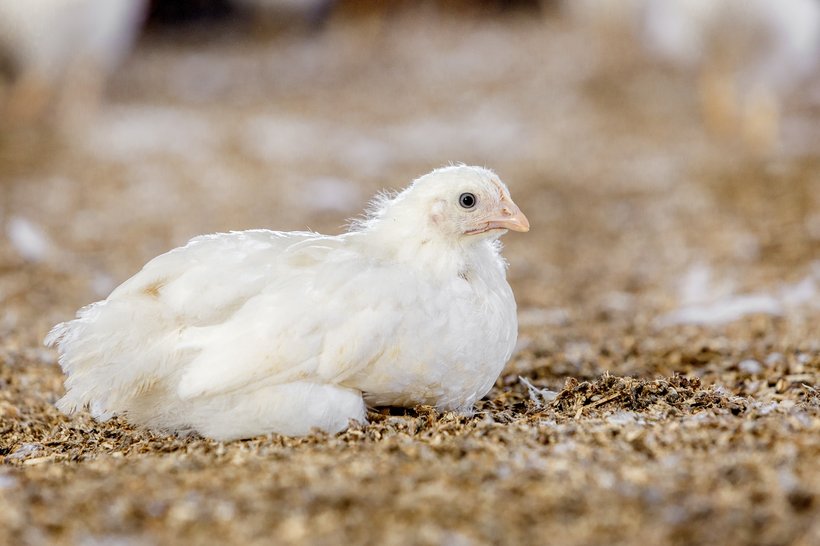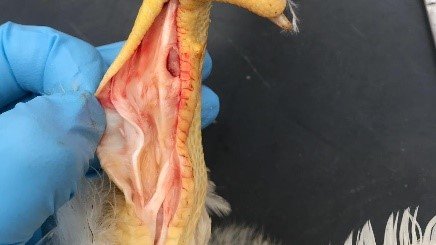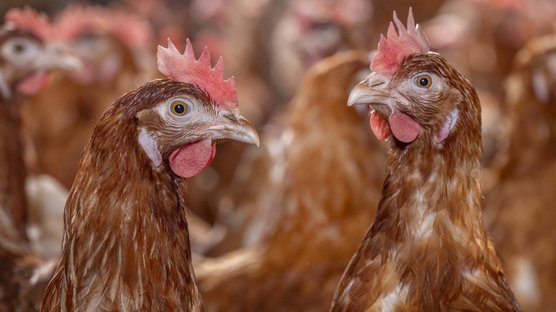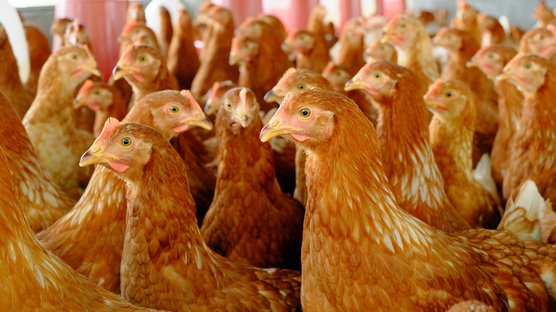
Published on April 7, 2021
Avian Reovirus
Avian reoviruses (ARVs) are double-stranded RNA viruses, belonging to the Reoviridae family in the genus Orthoreovirus, and causing arthritis and tenosynovitis in broilers, broiler breeders and turkeys (TARV).
Avian reoviruses are present all over the world and antibodies can be found in various types of birds. ARV spreads horizontally mainly by the oral-faecal route and vertically via egg transmission. ARV is relatively resistant to disinfectants and can easily survive in poultry houses and in poultry material.
Clinical Signs
In poultry, Avian reoviruses are associated with a lot of diseases and symptoms, because the virus is present on most poultry farms and is easy to isolate and culture. As an example, reoviruses are found in broilers with malabsorption, together with astro, corona and rotaviruses and a large variety of bacteria, so it is often difficult to tell what’s the causative agent.
There is much speculation regarding immunosuppressive effect of reoviruses, but it is not conclusive what their role could be.
In broilers and turkeys, the relation between reovirus infections and arthritis and tenosynovitis is clear and well understood. Mortality is low but morbidity is high. Birds don’t want to move because walking is painful, and the damage comes from retarded growth and condemnation at slaughter. Hock joints and gastrocnemius tendons are swollen and warm.
Diagnosis
Since avian reoviruses are widespread in nature and flocks can be in contact with non-pathogenic strains of the virus, ELISA titres can be detected in birds at variable levels. ELISA tests are useful to detect increase in titres post-vaccination when vaccines are used, but otherwise, just finding antibodies in serum samples of commercial chicken flock is not an indicator of disease.
The diagnose of Reo-arthritis -and tenosynovitis is made on clinical signs and on postmortem and must be confirmed by culture or RT-PCR.

The diagnose of Reo-arthritis and tenosynovitis is made on clinical signs and on postmortem.

Control & Vaccination
Reoviruses are relatively resistant to disinfectants and can survive easily in the environment. Biosecurity, proper cleaning and disinfection and single age all-in all-out management are important to reduce the infection pressure. Immunosuppressive diseases like Marek’s disease, IBDV and CIAV can make birds more susceptible for Reo infections, as can stress, suboptimal management conditions and mycotoxin contamination in the feed.
There seems to be an age-associated resistance. Birds older than 14 days can get infected but show less severe clinical signs. Most important in the control of Reo-arthritis -and tenosynovitis is vaccination of parent stock, for two reasons; first to prevent vertical transmission of the virus and second to protect the young birds with maternal antibodies.
Vaccination is done with modified live vaccines and with inactivated vaccines. Live priming is necessary to achieve sufficient antibody levels. Different variants are used, 1133, 2177, 1733 and 2408, all to protect against the 1133 strain. Vaccination of layers and layer breeders is not needed because of a very low sensitivity for the disease.
References
- Jacob Pitcovski and Sagar M. Goyal. Diseases of Poultry, 14th edition
- Jenny Nicholds and Holly S. Sellers. MSD veterinary manual 3/24/2021
- Louis van der Heide. Avian Diseases 44:638-641, 2000
- Guillermo Zavala. The Poultry Site April 24, 2019



